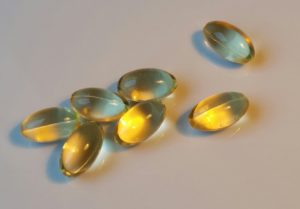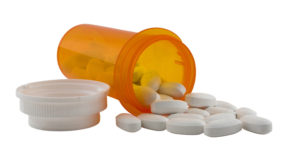 Best wishes for a fabulous 2023!
Best wishes for a fabulous 2023!
Category: Uncategorized
Winter Solstice

Winter solstice today. Shortest daylight period, longest night.
From here on daylight will start increasing!
Study Says Permanent Daylight Savings Would Reduce Car-Deer Crashes
 Finally, a study with results that are totally obvious to people living in areas with lots of deer. Researchers say that adopting permanent year-round daylight savings time would extend the hours of daylight, and in doing so would reduce the number of deer-vehicle collisions. Of course.
Finally, a study with results that are totally obvious to people living in areas with lots of deer. Researchers say that adopting permanent year-round daylight savings time would extend the hours of daylight, and in doing so would reduce the number of deer-vehicle collisions. Of course.
The Univ. of Washington researchers found that deer-vehicle collisions are 14 times more likely shortly after dark than before. Collisions with deer increase by 16% in the week after clocks change in the fall.
They estimate that permanent daylight savings time would probably prevent an estimated 36,550 deer deaths, 33 human deaths, 2054 human injuries, and about $1.2 billion in costs each year. This is because the skies would be brighter later into the evening.
On the other hand, they predict permanent standard time would result in an increase in deer-vehicle collisions, and more deaths, more injuries, and cost more money.
From Science Daily: Permanent daylight saving time would reduce deer-vehicle collisions, study shows
In much of the United States, there is a twice-yearly shift in timekeeping between standard time and daylight saving time, or DST, which delays both sunrise and sunset to make mornings darker and evenings brighter. Recently, scientists, policy experts, lawmakers and citizens have debated abandoning the twice-a-year switch and adopting either year-round standard time or DST. ...continue reading "Study Says Permanent Daylight Savings Would Reduce Car-Deer Crashes"
Factories Underreport Their Greenhouse Gas Emissions

It turns out that many companies are really, really underreporting the amount of planet warming gases (greenhouse gas emissions) that they release into the air. These pollutants (carbon dioxide and other gases) are causing the world to have increasingly higher temperatures. Uh-oh...
This underreporting has been exposed by Climate Trace - a project to measure at the source (of the pollution) the true levels of carbon dioxide and other global heating gases. Climate Trace released a report this week showing that oil and gas facilities around the world are emitting greenhouse gas emissions about three times higher than their producers claim. (Are you surprised that the big companies are lying?? Hah!)
In fact, half of the 50 largest sources of greenhouse gases (e.g., carbon dioxide, methane) in the world were oil and gas fields and production facilities.
Climate Trace (a non-profit group of academic scientists, environmental groups, technology companies) used evidence from satellites, remote sensors and other sources, and artificial intelligence to track who is polluting and how much throughout the world.
It's a big deal that finally there is monitoring of big polluters rather than we (including governments) taking them at their word. Will this finally result in serious action taken to reduce the amount of air pollutants being released by big companies? Hopefully.
Two good articles. 1) From NY Times: Who’s Driving Climate Change? New Data Catalogs 72,000 Polluters and Counting
A nonprofit backed by Al Gore and other big environmental donors says it can track emissions down to individual power plants, oil fields and cargo ships.
Upstream from Shanghai along the Yangtze River, a sprawling factory complex in eastern China is churning out tens of millions of tons of steel a year — and immense quantities of planet-warming gases.
...continue reading "Factories Underreport Their Greenhouse Gas Emissions"
Bird Species In Decline Have Reached A Tipping Point
 One distressing fact about the world around us is that bird numbers are plummeting. The U.S. State of the Birds 2022 report has come out discussing the top 70 bird species that are at the "tipping point" - at risk of becoming endangered. Look at the list to see if any of the bird species are found near where you live.
One distressing fact about the world around us is that bird numbers are plummeting. The U.S. State of the Birds 2022 report has come out discussing the top 70 bird species that are at the "tipping point" - at risk of becoming endangered. Look at the list to see if any of the bird species are found near where you live.
According to the Cornell Univ. researchers, the 70 "tipping point" species listed have already declined by at least 50% (or more) and could lose another half of their population in the coming years.
There are numerous reasons why bird numbers are dropping so rapidly (e.g., loss of habitat, pesticides, pollution), but there are also some positive steps you can personally take to help bird species around you survive. Additionally, this will help the environment and your own health (e.g., less pesticide exposure is good for health). Three simple steps to take:
#1 - Stop using lawn and garden pesticides. They poison birds landing on lawns, poison the insects they eat, poison critically important insect species such as bees, and also screw up lawn and garden microbial communities.
#2 - Instead, look for natural and non-toxic ways to control unwanted plants and insects. Practice IPM (Integrated Pest Management) or organic lawn and garden care. View "weeds" as wildflowers and welcome diversity.
#3 - Plant flowers and plant species that are beneficial to pollinators and birds. Plant native species.
Cornell Lab recommendations of 7 simple actions to take.
From State of the Birds 2022: Bird Declines Are Reaching a Tipping Point
In 2019, a study of 529 bird species with adequate long-term data for analysis (Science, Rosenberg et al.) found that 303 species in North America were declining—more than half of the bird species studied. ...continue reading "Bird Species In Decline Have Reached A Tipping Point"
Two Studies Find Vitamin D Doesn’t Prevent COVID
 More studies are finding that supplementing with vitamin D is not living up to its original promise - that is, as a supplement that can prevent or treat all sorts of health conditions. Two recent large studies found that daily vitamin D supplementation in persons with or without a vitamin D deficiency didn't reduce the risk of getting COVID-19.
More studies are finding that supplementing with vitamin D is not living up to its original promise - that is, as a supplement that can prevent or treat all sorts of health conditions. Two recent large studies found that daily vitamin D supplementation in persons with or without a vitamin D deficiency didn't reduce the risk of getting COVID-19.
Both studies found that no matter the vitamin D dose - low (800 IU/day), high (3200 IU/day), or even taken as a cod liver oil supplement - didn't prevent COVID infection, serious COVID, or any other respiratory infection. Very disappointing findings!
The researchers stress that both study results underscore that the COVID vaccines are the best way to protect a person from COVID-19 or a serious COVID illness. They advise that only persons with a vitamin D deficiency need vitamin D supplements. [Note: The best form of vitamin D is D3, which was given to the study participants.]
However, it must be pointed out that some other studies have found that vitamin D does lower how many respiratory infections a person gets each year (while other studies find no effect). So we'll see... more studies are ongoing.
From Medscape: Vitamin D Supplementation Shows No COVID-19 Prevention
Two large studies out of the UK and Norway show vitamin D supplementation has no benefit — as low dose, high dose, or in the form of cod liver oil supplementation — in preventing COVID-19 or acute respiratory tract infections, regardless of whether individuals are deficient or not. ...continue reading "Two Studies Find Vitamin D Doesn’t Prevent COVID"
Federally Funded Research Won’t Be Behind Paywalls In the Future
 Finally, it looks like soon everyone will be able to read the published scientific research articles that were funded by US taxpayer dollars. Instead of being behind a journal's "paywall" - which means you have to pay money to read the article (e.g. $40. !!), we will be able to read it for free.
Finally, it looks like soon everyone will be able to read the published scientific research articles that were funded by US taxpayer dollars. Instead of being behind a journal's "paywall" - which means you have to pay money to read the article (e.g. $40. !!), we will be able to read it for free.
According to the directive issued by the White House Office of Science and Technology Policy (OSTP), this must occur no later than December 31, 2025.
It is incredibly frustrating to read the abstract (very short summary) of a research article, but not be able to read the actual article. Especially when you know that we (you and I) paid for the research to take place. The only beneficiaries of that system are the journal publishers, who make oodles of money off of research articles that they got for free. Blech...
There has been a move towards open access (everyone has free access) of published research anyway, and this will just hasten it. One noteworthy open access publisher is PLOS (plos.org) and another open access journal is Environmental Health Perspectives (receives support from the U.S. National Institute of Environmental Health Sciences).
This is great! And should have happened years ago.
From The Scientist: No More Paywalls on Federally Funded Research: White House
In 2013, a memo from then-head of the Office of Science and Technology Policy John Holdren directed federal agencies to come up with a plan to make all the research they fund freely available to the public within 12 months of publication. Today (August 25), the current acting head of the same office, Alondra Nelson, released a memo that goes a step further, mandating that agencies ensure their research is available in publicly accessible repositories immediately on publication, by December 31, 2025 at the latest. ...continue reading "Federally Funded Research Won’t Be Behind Paywalls In the Future"
Restoring Hair With Low Doses of A Common Medicine
 Hair loss is a huge concern among adults, especially as they age. This week the NY Times printed an article about an inexpensive medicine that works amazingly well to restore hair. The treatment is to take a small dose of minoxidil daily and this results in hair growth.
Hair loss is a huge concern among adults, especially as they age. This week the NY Times printed an article about an inexpensive medicine that works amazingly well to restore hair. The treatment is to take a small dose of minoxidil daily and this results in hair growth.
This is the same hair loss treatment drug that is typically applied directly to the scalp (it's the active ingredient in Rogaine). But taken as a very low-dose pill it works even better. Taken in this low dose pill form is taking it "off-label" , which is a common practice in dermatology. Minoxidil is also an anti-hypertensive medicine (at higher doses).
The before and after photos in the article are fabulous - from very thin to lush, thick hair.
Excerpts from the New York Times: An Old Medicine Grows New Hair for Pennies a Day, Doctors Say
The ads are everywhere — and so are the inflated claims: Special shampoos and treatments, sometimes costing thousands of dollars, will make hair grow. But many dermatologists who specialize in hair loss say that most of these products don’t work. ...continue reading "Restoring Hair With Low Doses of A Common Medicine"
Study Finds No Effect From Two Sinus Products
 This month a number of persons asked me about the probiotic Lactococcus lactis (in Probiorinse) and whether it works. This product is marketed to people with sinusitis or sinus infections, with the message that it improves the sinus microbiome and sinus health. Does it?
This month a number of persons asked me about the probiotic Lactococcus lactis (in Probiorinse) and whether it works. This product is marketed to people with sinusitis or sinus infections, with the message that it improves the sinus microbiome and sinus health. Does it?
Unfortunately, the research says no. A well-done study published last year found that the bacteria Lactococcus lactis (Probiorinse) doesn't help to improve sinus symptoms in those with sinus issues. Yes, that bacteria is found in the sinuses, but it is not a keystone bacteria (one with a big effect) in sinus health.
The study compared the Probiorinse (Lactococcus lactis) product to Xlear (xylitol) and regular saline rinses.
The researchers tested xylitol, the probiotic Lactococcus lactis, and ordinary saline rinses separately for one month in a group of persons with chronic sinusitis. They found that none of these improved sinusitis symptoms or sinus microbial diversity (the sinus microbiome). In other words, there were no significant differences among the 3 groups.
Those with chronic sinus problems still had them at the end of the study, and their sinus microbiomes and symptoms were still very different from those of the healthy participants.
By the way, another study analyzed Lactoccocus lactis (using the product Probiorinse) against some strains of harmful bacteria (Pseudomonas aeruginosa) collected from persons with chronic sinusitis and found "no effect on 4 strains, a modest inhibitory effect on one strain, and a modest proliferative effect on one" (it increased this harmful strain!). Basically no effect - not a good result.
Bottom line: Stick with ordinary saline rinses to help with sinus congestion. The medical view is that saline nasal irrigation is recommended because it helps a little with nasal stuffiness or congestion, even though this effect is temporary (a few hours?). Also, try the probiotic Lactobacillus sakei, which is a keystone bacteria in the sinuses and which kills/dominates over many harmful bacteria (e.g., Staphylococcus aureus - a problem bacteria in many with sinusitis).
Excerpt from the 2021 study by Lambert PA, et al., in the medical journal Laryngoscope Investigative Otolaryngology: Microbiomics of irrigation with xylitol or Lactococcus lactis in chronic rhinosinusitis
No significant trends in alpha or beta diversity as a result of treatment were observed. SNOT‐22 score did not change significantly following treatment with xylitol, L. lactis, or saline. [Translation: the microbiome (alpha and beta diversity) didn't change, and symptoms (SNOT-22 score) didn't change]
Heat Wave Continues
 Deer resting during heat wave.
Deer resting during heat wave.
High heat, high humidity, and high dew point. A miserable day for everyone.
